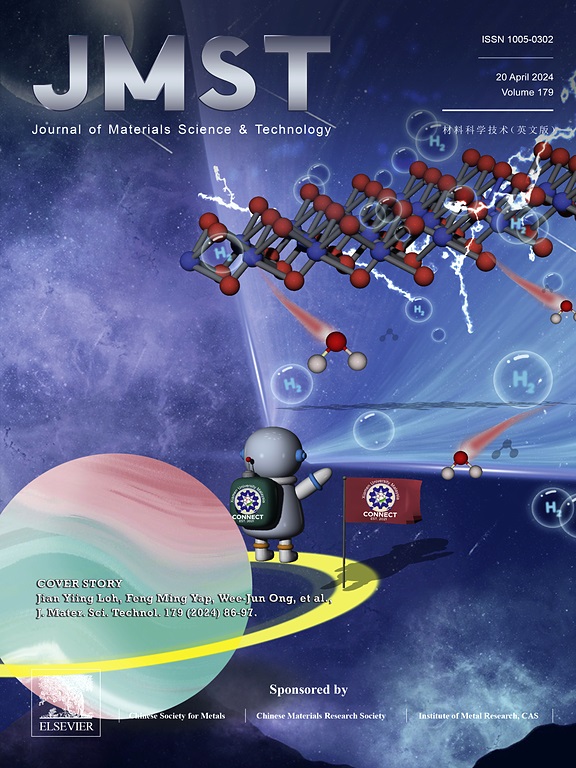通过相间工程构建强度-延性协同的新材料
IF 11.2
1区 材料科学
Q1 MATERIALS SCIENCE, MULTIDISCIPLINARY
引用次数: 0
摘要
传统的强化合金的策略通常伴随着巨大的延性牺牲,这被称为强度-延性权衡。需要新的冶金加工方法来克服这一长期存在的困境。在这里,我们报告了一种新的固态粉末制造路线,以克服这一挑战,能够使用现成的金属粉末作为原料构建复杂的多相成分复合材料。通过将传统奥氏体不锈钢与铁素体钢粉混合并采用热等静压强化的系统,成功验证了材料的设计理念。与铁素体和奥氏体相比,在不牺牲延展性的情况下获得了显著的强化和加工淬透性。这种非凡的强度-延性协同作用归因于不同相间结构良好的成分梯度,导致原始粉末规模上的软区和硬区没有尖锐的界面。因此,在机械加载过程中,塑性由软区向硬区发展,是减轻变形不相容、实现显著延性的关键。我们的研究为具有协同特性的材料设计提供了一个新的概念,这一概念过去是传统材料的权衡,适用于具有前所未有的多功能的广泛材料系统。本文章由计算机程序翻译,如有差异,请以英文原文为准。

Architecting new materials with strength-ductility synergy through interphase engineering
Conventional strategies to strengthen alloys are usually accompanied by drastic sacrifice in ductility, which is known as the strength-ductility trade-off. New metallurgical processing approaches are required to defeat this longstanding dilemma. Here we report a novel solid-state powder manufacturing route to overcome this challenge enabling the architecting of a complex multiphase constituent composite using readily available metal powder as a feedstock. The materials design philosophy is successfully verified in a system mixing conventional austenitic stainless steel and ferritic steel powder and consolidating it by hot isostatic pressing. Significant strengthening and work hardenability are achieved at no expense of ductility compared to the ferrite and austenite on their own. Such extraordinary strength-ductility synergy is attributed to the well-architected compositional gradients across different phases resulting in soft and hard regions at the scale of the original powder without sharp interfaces. Accordingly, plasticity progresses from soft to hard regions during mechanical loading, which is the key to mitigating the deformation incompatibility and enabling remarkable ductility. Our study provides a new concept for materials design with synergistic properties that used to be trade-offs in conventional materials, which is applicable to a broad range of material systems with unprecedented multifunctionality.
求助全文
通过发布文献求助,成功后即可免费获取论文全文。
去求助
来源期刊

Journal of Materials Science & Technology
工程技术-材料科学:综合
CiteScore
20.00
自引率
11.00%
发文量
995
审稿时长
13 days
期刊介绍:
Journal of Materials Science & Technology strives to promote global collaboration in the field of materials science and technology. It primarily publishes original research papers, invited review articles, letters, research notes, and summaries of scientific achievements. The journal covers a wide range of materials science and technology topics, including metallic materials, inorganic nonmetallic materials, and composite materials.
 求助内容:
求助内容: 应助结果提醒方式:
应助结果提醒方式:


